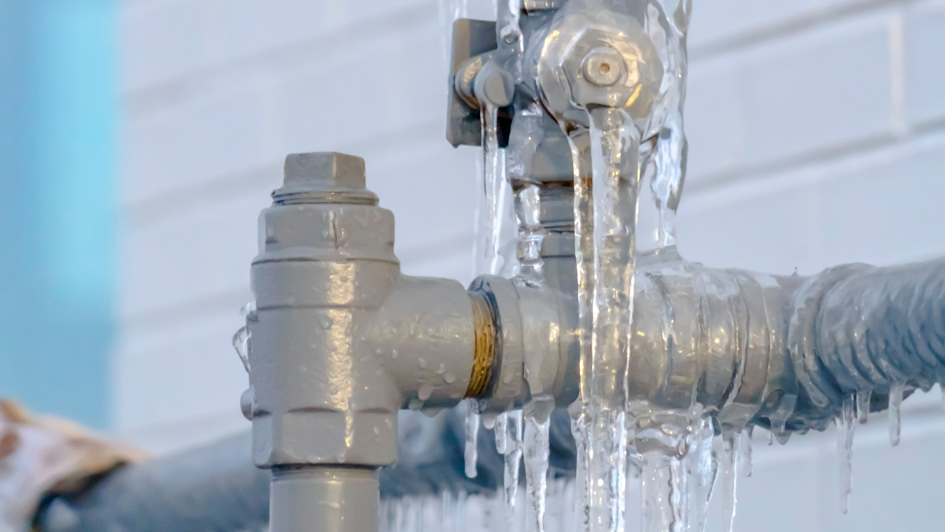
The snowy winter weather offers fun activities like sledding down a nearby hill or snowball fights in the front yard. That being said, winter weather can be hard on your home. Severely cold conditions can cause the water lines in your house's plumbing system to freeze and burst, which may lead to severe water damage and enduring negative effects.
If your pipes are frozen, you should contact a plumber in Shamokin and Sunbury to resolve the issue. That being said, there’s a lot you can perform on your own to prevent this from happening – and even minor prevention can go a long way.
What Pipes Are at Risk of Freezing
The pipes at the greatest risk of freezing are uninsulated water lines. Prevalent locations for uncovered pipes are inside attic crawlspaces, near exterior walls, in the basement or even running underneath a modular home. Water lines that are not correctly insulated are at the highest risk.
How to Stop Pipes from Freezing Over in Your Home
Properly insulating exposed water lines is a good first step to keeping your pipes free of ice. You’ll generally have access to lots of these materials from the local plumbing company, and may also already have some somewhere in your home.
Be mindful not to cover other flammable insulation materials where they might catch fire. If you don’t feel comfortable insulating the pipes yourself, contact your local plumbing services professional in Shamokin and Sunbury to do the job.
If you do decide to insulate the pipes on your own, good insulation materials for pipes include:
- Wraps or roll insulation: Many plumbers, hardware stores and big box retailers provide insulation – commonly fiberglass, foam wraps or pipe sleeves – that you can use to cover or fit around your pipes. They are sold in various lengths and sizes to fit the needs of your home.
- Newspaper: In a pinch, newspaper can be used as insulation. If the weather is getting colder and you aren’t able to buy insulation soon enough, consider covering uninsulated pipes in this.
- Towels or rags: If you miss the opportunity to add insulation and don’t have any newspaper handy, wrapping notably vulnerable pipes with towels or clean rags as a last-ditch effort may be just enough to keep the cold air off the pipes.
An additional preventative step you can take to keep pipes from freezing in your home is to fill any cracks that may permit cold air inside your home. Focus on the window frames, which can draw in surprisingly powerful drafts. Not only should this help to stop your pipes from freezing, but it will have the added benefit of making your home more energy efficient.
Five More Ways to Keep Your Pipes from Freezing:
- Open the cabinet doors. Opening the cabinet doors underneath the sinks and other areas of your home with plumbing will permit more warm air from the rest of the room to reach the pipes.
- Letting water drip. Letting water flow by letting your faucets drip even just a bit can help thwart frozen pipes.
- Open interior doors. By opening doors for rooms or hallways, your home can be heated more evenly. This is especially important if there's a room that tends to be colder or hotter than the remainder of your home.
- Close the garage door. The exception to the open doors recommendation is the garage door, which you should keep closed – especially if your water lines are installed under the garage.
- Keep the heat steady. Experts encourage setting the thermostat at a persistent temperature and leaving it in place, rather than permitting it to get lower at night. Set it no cooler than 55 degrees.
How to Prevent Pipes from Freezing in an Unused Home
When you’re inside a house, it’s not difficult to realize when something breaks down. But what added steps can you attempt to stop pipes from freezing in an empty home or vacation home when the damage from a frozen pipe may not be discovered for some time?
As with a primary residence, insulating any exposed water lines, opening interior doors throughout the home and winterizing the vacant home are the first steps to try at first.
Alternative Steps to Stop Pipes from Freezing in a Vacant Home:
- Leave the heat on. Even though you aren’t going to be there, it’s best to keep the heat on – even if you adjust the thermostat down cooler than you would if you were there. As with a primary residence, experts suggest keeping the temperature at no cooler than 55 degrees.
- Shut water off and drain the lines. If you’re going to be away for several weeks or are winterizing a vacation cabin or cottage, shutting the water off to the house and draining the water out of the water lines is one way to stop pipes from freezing and bursting open. Try not to forget to clear the water out of all appliances, including the hot water heater, as well as the toilets. Confirm you clear out all the water from the plumbing. If you're uncertain of how to clear out the water from the pipes, or don’t feel secure performing it without any help, a plumber in Shamokin and Sunbury will be happy to offer support.
